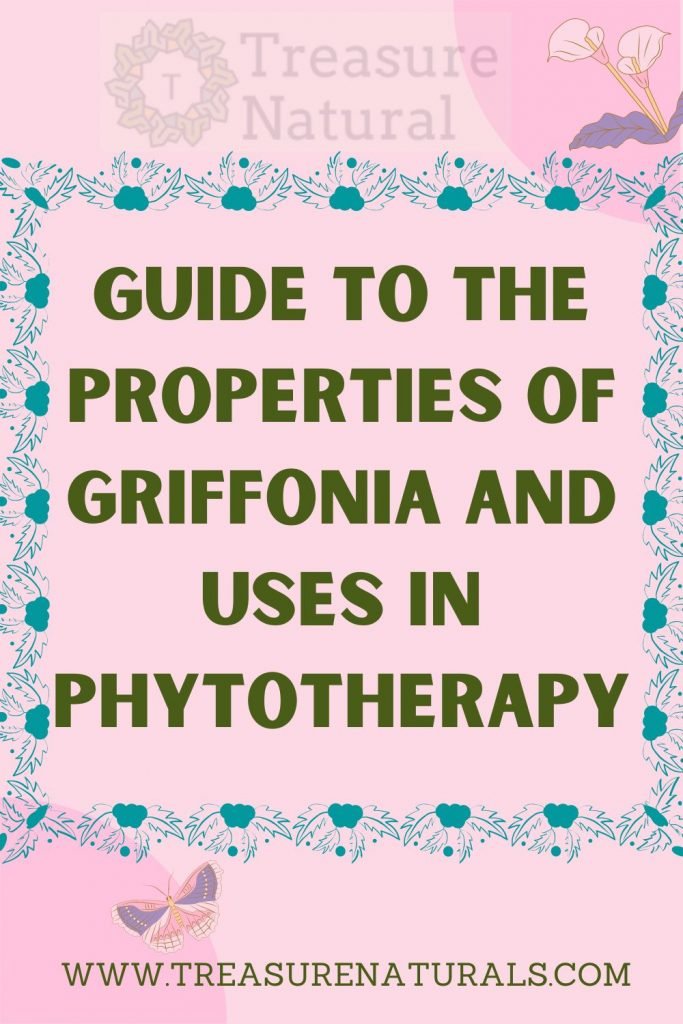
Let’s discover all the properties and uses in phytotherapy of a little known plant, griffonia. It is very effective for anxiety and depression, without however causing addiction.
Its clustered inflorescences with an unmistakable greenish color and the pods within which the very black seeds are contained, make griffonia (griffonia simplicifolia) a plant known in many countries of the world with the name of ‘African bean‘. Seeing the typical discoid shape of the seeds it produces, it is easy to understand the origin of its name.
It is a woody shrub plant native to the tropical regions of Africa, capable of reaching three meters in height. It is widespread especially in Ghana, Togo and the Ivory Coast.
The history of griffonia
In Africa traditionally griffonia is used:
- the bark and root as a chewable stick
- leaves to heal wounds
- the juice for the treatment of kidney disorders
- the decoction of the leaves to reduce the spasms of vomiting
- the pulp obtained from the maceration of the bark to seal and heal wounds
A very important plant, therefore, even more used in pharmacology and phytotherapy since the 1980s. In these years, its properties as a natural antidepressant were discovered.
Griffonia: medicinal properties
It is the seeds in the pods of griffonia that contain the most important active ingredients in phytotherapy. A significant amount of the so -called 5-HTP, namely 5-hydroxides-tryptophan, a natural synthesizer of serotonin which is the hormone that in our body acts as a stabilizer of mood, sleep and appetite.
These seeds are in fact rich in tryptophan, the amino acid precursor of serotonin, a neurotransmitter dedicated to mood.
The use of synthetic tryptophan for depression and insomnia was banned by the FDA in the 1980s due to cases of severe reactions. For this reason, active ingredients of plant origin have been rediscovered. From this moment, griffonia has become one of the most used plants in western herbal medicine.
Curiosity: the foods richest in tryptophan are generally dairy products and dairy products, followed by meats. But vegetarians do not worry, since soy milk also contains soy milk, as well as the other derived from soy, tofu, as well as legumes such as chickpeas, lentils, beans, lentils and chickpeas, nuts and oil seeds, cereals wholemeal and different types of fruit (bananas in primis).
This is why through the intake of griffonia (as with other natural antidepressants, such as mallow, ginseng and St. John’s wort) it is possible to increase the levels of serotonin present in the body and fight depressive states, anxiety, eating disorders, insomnia, nervous hunger.
How to use griffonia
It should be emphasized that this plant must be taken under medical supervision. Generally the recommended use is 2 tablets or capsules a day of 300 or 600 mg of dry extract of the plant, between meals.
Several studies have shown that the seed extract is effective in sleep disorders and in cases of depression, anxiety and mood alterations.
Griffonia also seems effective in cases of ‘nervous hunger’, especially with regard to the simple sugars contained in sweets.
Furthermore, even at high doses, the active principle of griffonia has not given contraindications, and above all, it does not show addiction and dependence.
It can be associated with other plants with a relaxing action such as lemon balm, passion flower and St. John’s wort.






